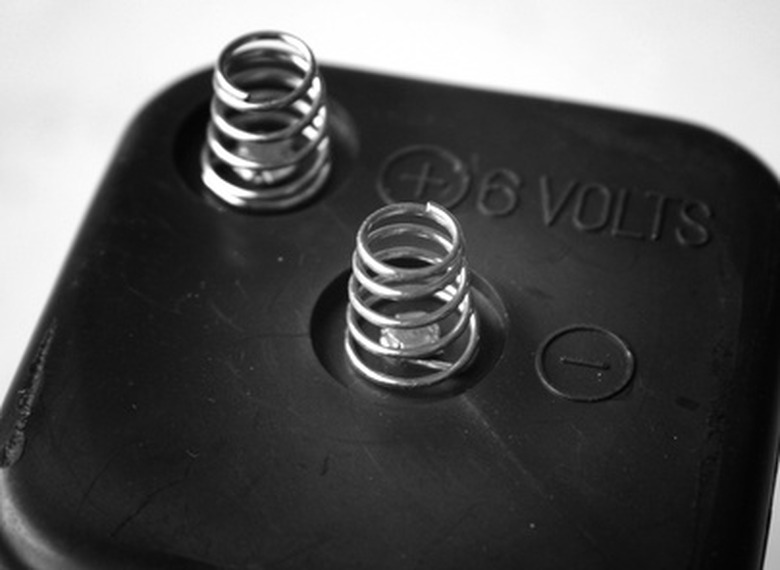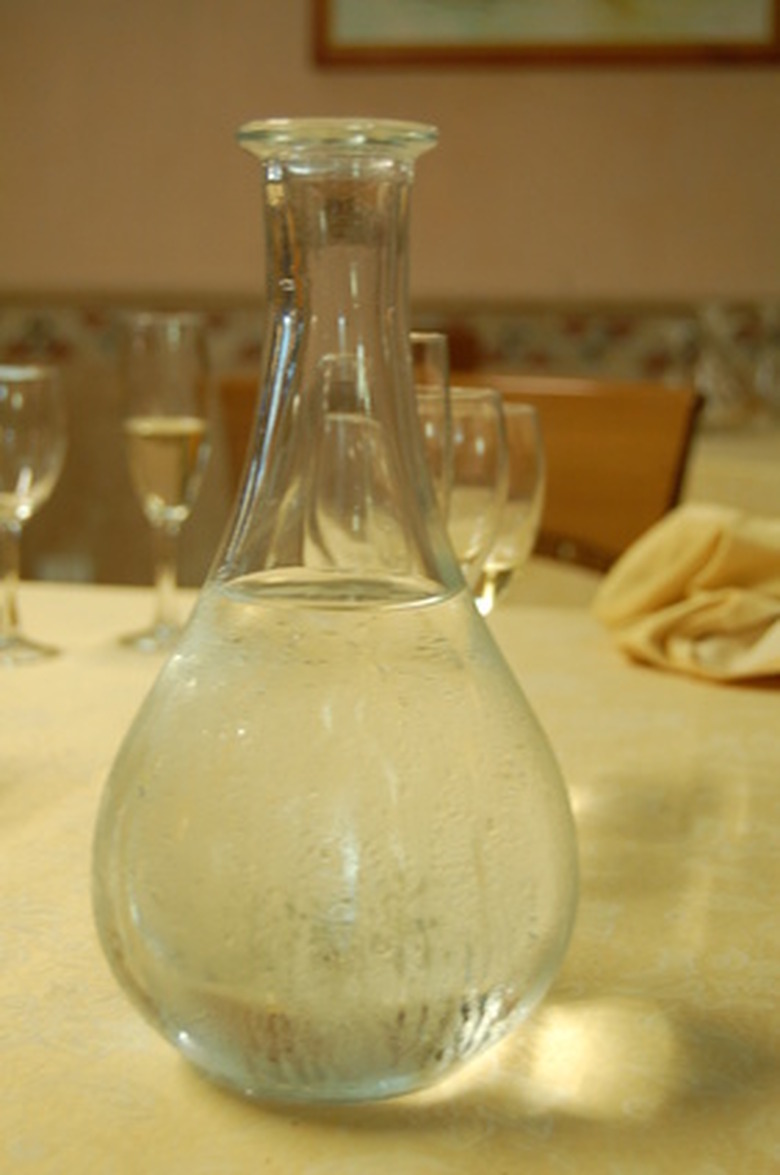How To Store And Collect Hydrogen Gas
Hydrogen, the simplest and most abundant element in the universe, is difficult to find in diatomic form on Earth. Instead, it is most often found in compounds. A common hydrogen compound is water. Diatomic, or two atoms per molecule, hydrogen can be isolated by electrically separating distilled water. This process is known as electrolysis and creates oxygen gas as well. It is by far the easiest and safest way to collect and store hydrogen gas.
Step 1
Obtain an electrolysis system. Commercially made electrolysis systems are much better options than personally built systems. They typically come with a battery, copper wires, nickel electrodes, glass tubes, a water reservoir and stopcocks. The battery is the driving force and energy that starts the electrolysis reaction. The copper wires and the nickel electrodes deliver the electricity to the water. The glass tubes and water reservoir are used to hold ionized and distilled water respectively. The stopcocks are used to extract the hydrogen and oxygen gas.
Step 2
Attach the electrolysis system to a ringstand and clamp. The system must be vertical with the reservoir and stopcocks at the top point. The rubber stoppers must be closest to the ground.
Step 3
Attach the copper wires and the rubber stoppers to the bottom holes in the glass tubes.
Step 4
Pour distilled water into the reservoir. By using distilled water, users are almost guaranteed pure samples. Because the reservoir is at the top, gravity will pull the water into the connecting tube. If the reservoir is not at the top, a pump can be used to place water in the connecting tube.
Step 5
Turn on the battery. The electrical currents will separate the distilled water into two different types of ionized water. The anode glass tube will obtain water with hydrogen ions (H+) while the cathode gas tube will receive water with hydroxide ions (OH-).
Step 6
Test the ionized water samples. An acid base indicator can be used to do this. When Universal Indicator is used, the anode should appear bright pink. This is because water with hydrogen ions is acidic and pink is an indicator for acids. Bases, on the other hand, appear greenish-blue when Universal Indicator is used. The ionized water in the cathode should be this color because water with hydroxide ions is basic. Also, there should appear to be more water in the cathode. This is because the electrolysis of water yields 2 diatomic hydrogen molecules for every diatomic oxygen molecule. More gas means that more of its associated water was converted.
Step 7
Extract the hydrogen gas. This can be done using a rubber hose and attaching it to a receiving container. Rubber hoses are commonly found in a chemistry lab and are used to deliver fuel to a Bunsen burner. The hose should comfortably attach to the stopcocks. After unscrewing the stopcocks, the pressure from the ionized water will force hydrogen gas from the electrolysis system to the container. The spare diatomic oxygen can be safely released into the surrounding air.
Things Needed
- Electrolysis system
- Distilled water
- Rubber hose
- Receiver container
Cite This Article
MLA
Miller, Charles Alex. "How To Store And Collect Hydrogen Gas" sciencing.com, https://www.sciencing.com/store-collect-hydrogen-gas-6761369/. 24 April 2017.
APA
Miller, Charles Alex. (2017, April 24). How To Store And Collect Hydrogen Gas. sciencing.com. Retrieved from https://www.sciencing.com/store-collect-hydrogen-gas-6761369/
Chicago
Miller, Charles Alex. How To Store And Collect Hydrogen Gas last modified March 24, 2022. https://www.sciencing.com/store-collect-hydrogen-gas-6761369/

